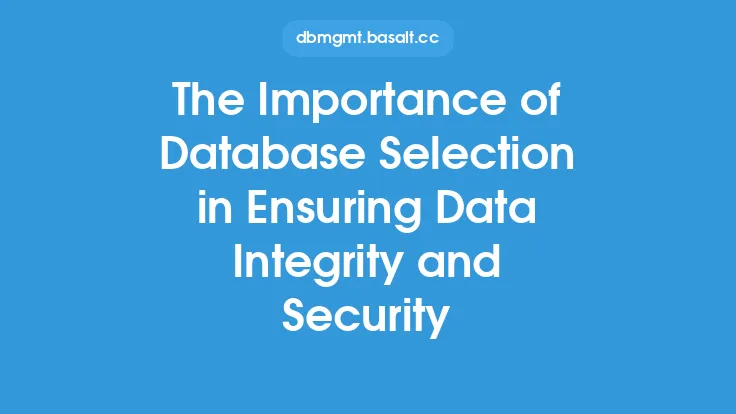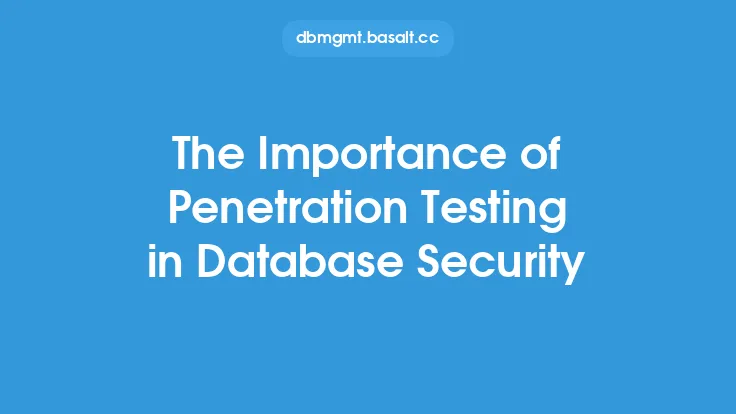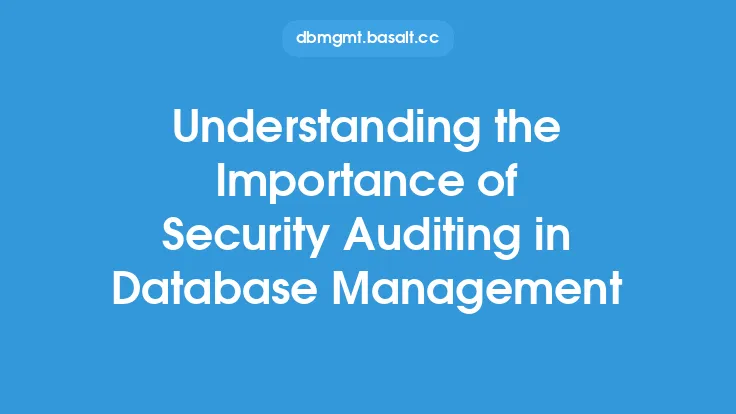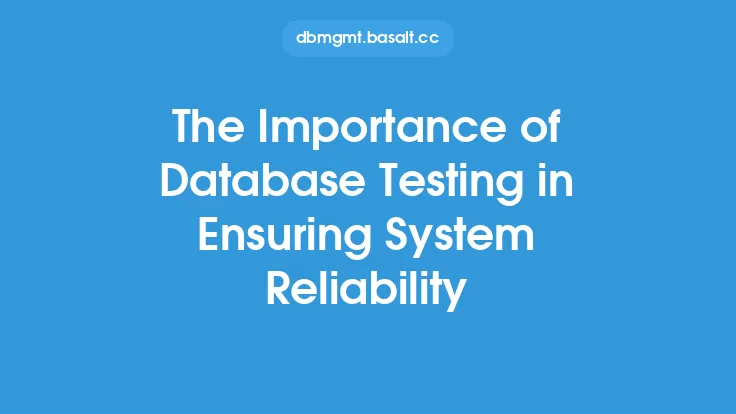In today's digital landscape, databases are the lifeblood of any organization, storing sensitive information and powering critical applications. As such, they have become a prime target for cyber attackers seeking to exploit valuable data. The importance of real-time threat detection in database security cannot be overstated, as it serves as the first line of defense against these malicious actors. Real-time threat detection is the ability to identify and respond to potential security threats as they occur, allowing organizations to take swift action to prevent data breaches and minimize damage.
What is Real-Time Threat Detection?
Real-time threat detection refers to the process of continuously monitoring database activity to identify and flag potential security threats in real-time. This involves analyzing database logs, network traffic, and system calls to detect anomalies and suspicious behavior that may indicate a security incident. Real-time threat detection systems use advanced algorithms and machine learning techniques to analyze vast amounts of data and identify patterns that may not be apparent to human analysts. By detecting threats in real-time, organizations can respond quickly to prevent data breaches and minimize the impact of a security incident.
Benefits of Real-Time Threat Detection
The benefits of real-time threat detection in database security are numerous. Firstly, it enables organizations to respond quickly to security incidents, reducing the risk of data breaches and minimizing the impact of a security incident. Real-time threat detection also helps to identify and mitigate advanced threats, such as zero-day exploits and targeted attacks, which can evade traditional security controls. Additionally, real-time threat detection provides organizations with greater visibility into database activity, allowing them to identify and address potential security vulnerabilities before they can be exploited. Finally, real-time threat detection helps organizations to meet regulatory requirements and comply with industry standards, such as PCI-DSS and HIPAA.
Key Components of Real-Time Threat Detection
Real-time threat detection systems typically consist of several key components, including data collection, analytics, and response. Data collection involves gathering database logs, network traffic, and system calls from various sources, such as database management systems, network devices, and operating systems. Analytics involves analyzing the collected data using advanced algorithms and machine learning techniques to identify patterns and anomalies that may indicate a security threat. Response involves taking action to respond to identified threats, such as blocking malicious traffic, terminating suspicious sessions, or alerting security teams.
Techniques Used in Real-Time Threat Detection
Real-time threat detection systems use a variety of techniques to identify potential security threats, including anomaly detection, signature-based detection, and behavioral analysis. Anomaly detection involves identifying patterns of behavior that are outside the norm, such as unusual login activity or unexpected changes to database schema. Signature-based detection involves identifying known malicious activity, such as SQL injection attacks or cross-site scripting (XSS) attacks. Behavioral analysis involves analyzing database activity to identify suspicious behavior, such as multiple failed login attempts or unusual data access patterns.
Challenges and Limitations
While real-time threat detection is a powerful tool for database security, it is not without its challenges and limitations. One of the main challenges is the sheer volume of data that must be analyzed, which can be overwhelming for security teams. Additionally, real-time threat detection systems can generate false positives, which can lead to unnecessary alerts and wasted resources. Furthermore, real-time threat detection systems require continuous tuning and updating to stay ahead of emerging threats and evolving attack techniques.
Best Practices for Implementing Real-Time Threat Detection
To implement real-time threat detection effectively, organizations should follow several best practices. Firstly, they should implement a comprehensive data collection strategy that gathers data from all relevant sources. Secondly, they should use advanced analytics and machine learning techniques to identify patterns and anomalies in the collected data. Thirdly, they should implement a robust response strategy that takes action to respond to identified threats. Finally, they should continuously tune and update their real-time threat detection system to stay ahead of emerging threats and evolving attack techniques.
Conclusion
In conclusion, real-time threat detection is a critical component of database security, enabling organizations to identify and respond to potential security threats in real-time. By using advanced analytics and machine learning techniques to analyze database activity, organizations can detect and prevent data breaches, minimize the impact of security incidents, and meet regulatory requirements. While there are challenges and limitations to implementing real-time threat detection, the benefits far outweigh the costs, making it an essential tool for any organization seeking to protect its sensitive data.





